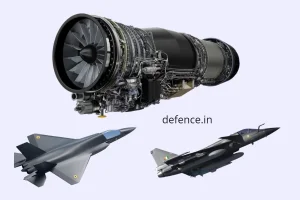- Views: 4K
- Replies: 25
The recent showcasing of India's planned Twin Engine Deck-Based Fighter (TEDBF) has ignited considerable discussion online regarding its design origins.
Developed by the Aeronautical Development Agency (ADA), the scale model presented, notably around the time of Aero India 2025, bears a visual similarity to the French Dassault Rafale, leading to questions about whether India's future carrier-borne aircraft is an independent design or influenced by the Rafale.
Speculation across various digital platforms has drawn comparisons between the TEDBF's canard-delta wing configuration and twin-engine layout and those of the Rafale fighters recently acquired by the Indian Air Force (IAF) and Navy.
While some observers see this as a natural convergence of aerodynamic solutions for similar operational requirements, others suggest that ADA might have replicated aspects of the French jet.
However, officials associated with the project strongly refute claims of imitation or reverse-engineering. An ADA representative stated that the design resulted from an internal evaluation of competing concepts, with the final configuration chosen by the Indian Navy based on its specific needs.
They emphasized that the TEDBF's development leverages experience gained from the indigenous Light Combat Aircraft (LCA) Tejas and its naval variant programs, not access to Rafale blueprints or technology. The official denied having access to the IAF's Rafale fleet or its confidential technical data for the TEDBF's design process.
This debate occurs as India strengthens its defence relationship with France, highlighted by the procurement of 36 Rafale jets for the Air Force and a subsequent agreement for 26 Rafale Marine aircraft for naval carrier operations.
Some critics theorize that access to Rafale information could have been gained through offset agreements linked to these deals or interactions with the IAF.
Despite superficial resemblances, ADA highlights key technical differences distinguishing the TEDBF from the Rafale. A significant feature is the use of Diverterless Supersonic Inlets (DSI), an advanced intake design that improves stealth characteristics by reducing radar signature and complexity compared to the Rafale's conventional intakes.
This DSI technology is understood to be derived from advancements made during the development of India's other future fighter program, the Advanced Medium Combat Aircraft (AMCA), rather than the Rafale.
Furthermore, the TEDBF is specifically designed for aircraft carrier operations aboard INS Vikrant and INS Vikramaditya. It incorporates a wing-folding mechanism essential for optimizing space on carrier decks, a feature not present on the land-based Rafale variants and engineered independently by ADA for the naval role, although the Rafale M (Marine) used by the French Navy also has folding wings.
Dimensionally, the TEDBF is planned to be larger than the Rafale M, with a reported length difference of nearly 2 meters and a Maximum Takeoff Weight (MTOW) of 26 tonnes, compared to the Rafale M's 24.5 tonnes. This suggests a greater capacity for fuel and ordnance, potentially offering longer range and endurance for maritime missions.
The Indian Navy's selection of this design reflects its strategic requirements for a "5th Generation Minus" fighter. This classification indicates a focus on advanced capabilities, carrier compatibility, and multi-role versatility, potentially balancing cutting-edge features with affordability and achievable timelines, rather than pursuing the full stealth characteristics of aircraft like the F-35 or the planned indigenous AMCA.
The TEDBF is anticipated to enter service around the mid-2030s, replacing the Navy's ageing MiG-29K fleet and operating alongside the newly ordered Rafale M fighters.
Arguments against the possibility of reverse-engineering also point to logistical challenges. The IAF Rafale fleet operates under strict protocols, and there is no public evidence suggesting ADA gained access to proprietary Dassault design information.
Defence offset agreements typically involve manufacturing or component supply, not the transfer of core design secrets. Moreover, conceptual work on the TEDBF reportedly began before the Rafale M deal was finalized, making the timeline for copying less feasible.
As development progresses, the TEDBF represents a significant step in India's push for self-reliance in advanced defence technology, building upon decades of aerospace research and development.


